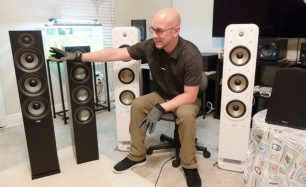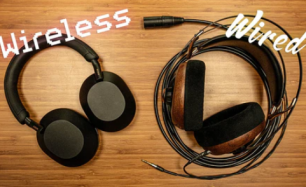Wireless vs. Wired Audio: Debunking the Sound Quality Myth
In the world of audio, the debate between wired vs. wireless listening continues to spark passionate opinions. Audiophiles have long championed wired headphones for their superior sound quality, while the convenience and innovation of wireless options have won over casual listeners and tech-savvy multitaskers. But as wireless technology has rapidly advanced, the question remains: Does wired audio really sound better—or is it just a myth waiting to be debunked?
For women who love great sound—whether for music, podcasts, workouts, or winding down with a film—understanding the real differences between wired and wireless can help you choose what truly fits your lifestyle, without falling for outdated assumptions.

1. The Sound Quality Argument: Then vs. Now
Traditionally, wired headphones had the upper hand in audio fidelity. The direct analog signal from a device to the headphones allowed for lossless, uninterrupted sound with no compression, lag, or interference. This made them the go-to for serious music listeners and professionals in recording environments.
However, today’s wireless headphones are not what they used to be. With the introduction of Bluetooth 5.0, aptX, LDAC, and AAC codecs, many wireless models can now deliver near-lossless, high-resolution audio—especially when paired with compatible devices and streaming platforms. The gap in sound quality has significantly narrowed, and for most users, the difference is either minimal or imperceptible.
2. The Convenience Factor: Wireless Wins the Lifestyle Test
There’s no denying that wireless headphones offer more freedom and flexibility. Whether you’re working out, running errands, taking calls, or simply moving around your home, not having a cord makes life a little smoother. True wireless earbuds and Bluetooth over-ears also come with features wired options often lack—like active noise cancellation, touch controls, voice assistants, and multipoint connectivity.
For everyday listening, the slight trade-off (if any) in audio quality is often outweighed by the sheer convenience. And with many wireless models offering excellent battery life and fast charging, long gone are the days when wireless meant constant charging anxiety.
3. When Wired Still Has the Edge
That said, wired audio hasn’t disappeared for good reason. If you’re an audiophile, a musician, or someone who listens in a controlled, quiet environment using high-end equipment, wired headphones still provide the most direct, uncompressed sound path. They’re also ideal for studio recording and mixing, where even the tiniest details matter.
Wired headphones also don’t rely on battery power, making them more reliable for long-haul flights, remote work marathons, or any time you want to listen without worrying about a charge. Plus, there’s no risk of Bluetooth pairing issues or dropouts—just plug in and go.nic music, the extra clarity can reveal layers that standard formats often flatten or hide.

Final Thoughts
The idea that wired audio is always better than wireless is quickly becoming outdated. Today’s wireless technology is sophisticated enough to satisfy even discerning ears, while offering a level of freedom and functionality that wired headphones simply can’t match.
Ultimately, the choice comes down to how—and where—you listen. If ultimate fidelity is your priority and you’re listening in a focused, controlled setting, wired might still be your best bet. But for everyday use, travel, and active lifestyles, wireless delivers impressive sound with unbeatable convenience.
So no matter what you choose, rest assured: great audio isn’t about cables—it’s about connection.








